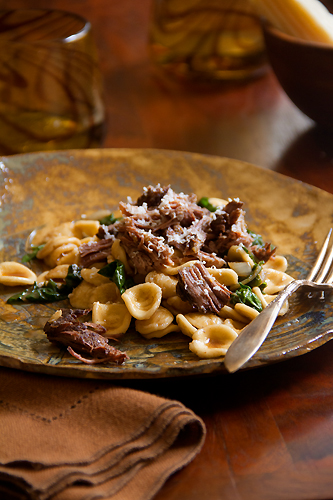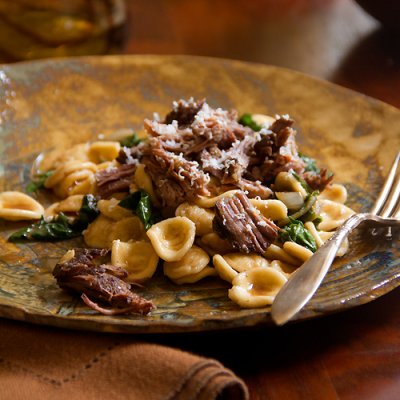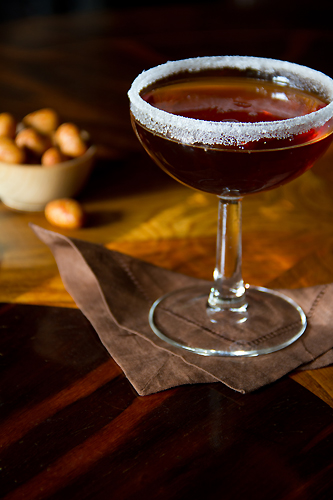
You can’t screw up braised short ribs. You just can’t. I’d even go as far as saying braising is for dummies– extremely smart dummies. Because it’s the best cooking technique that requires no technique. No special skills. No innate knowledge. Heck, you don’t even need special or particularly particular ingredients.
Braising combines liquid, low heat, and long cooking times to create flavorful fall-off-the-bone tender moist meat. Whenever wine or beer are involved– all the better. But you can’t choose bad combinations of flavor and you will never, ever be disappointed.
You can get exotic as in Korean kalbi jim– filling the pot with soy, sugar, sesame seeds, oil, garlic, and ginger. You can keep it more “western” in the classic French sense with aromatic herbs, mirepoix, and red wine, as I did with these Cabernet Braised Short Ribs with Swiss Chard and Orecchiette. In either instance, you can add as much or as little as you like, varying the ratios to suit your pantry. I promise you that the end result will be rich, flavorful and tender.
Braising is not difficult and the results will make you look like an accomplished chef (not that you aren’t…). I think braises are perfect for low-stress dinner parties. You can braise these short ribs days in advance, then simply boil the pasta and wilt the greens before serving. You can’t really mess it up.
The concept behind braising is this: the main ingredient is seared, or browned in fat. It is then simmered in liquid on low heat in a covered pot for a very long time. I like my Staub cast iron for this job because it has these little nubblies on the lid that allows the steam to rain back down into the pan in an all-around even fashion. This is unlike the smooth lids of some other brands, which tend to accumulate the droplets then send them sliding down the edges of the pot. That is a very uneven distribution method in my opinion.
Cooking the meat slow, moist and covered over low heat for a long time breaks down the tough connective tissue in meat. Through time, the moisture and heat build, and the collagen (which is what makes the meat “tough”) dissolves into gelatin. The gelatin moves into the sauce and works as a slight thickening agent making the sauce smooth and velvety.
The key to success is time. Because as soon as the meat cooks through, its fibers begin to expel moisture. Thereby causing the meat to become dry and less flavorful. If you were to pull the meat out of the pan at this point you would be disappointed with the results. But if you give the meat, even more, cooking time (2, 3 maybe even 4 hours), these fibers relax and absorb the melted fat as well as the flavorful broth. This is called osmosis. The long and short of this is that everything re-hydrates and becomes very tender with an amazing flavor! So come on, you can do this. Try it, I promise you. You won’t screw it up. GREG



Hi Greg, is this the recipe for the short ribs you served with the creamy polenta? I really want to try replicating that. Amazing reduction sauce!
Yes!! GREG